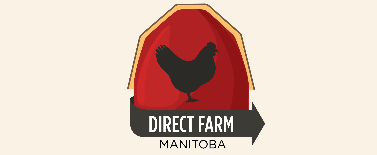Plastic
 Saturday, February 8, 2020 at 9:54AM
Saturday, February 8, 2020 at 9:54AM By Gary Martens
 So Sobeys has discontinued its use of plastic checkout bags as of January 31, 2020. Sobeys claims that this will initially eliminate 225 million of these plastic bags. When the ban expands to their other stores it will reduce plastic bag use by 800 million bags per year.
So Sobeys has discontinued its use of plastic checkout bags as of January 31, 2020. Sobeys claims that this will initially eliminate 225 million of these plastic bags. When the ban expands to their other stores it will reduce plastic bag use by 800 million bags per year.
Loblaws (Superstore) claims that since they started charging for plastic bags in 2009 they have reduced plastic bag use by 12 billion bags.
Plastics is not the first thing we have discontinued or banned. DDT and Freon quickly come to mind. The trajectory of plastic is that it was invented in 1862 and came into general use in 1965, 103 years later. The first warning that plastics would create a problem came in 1972, seven years later. Bangladesh was the first country to ban the use of single use plastic in 2002. Since then many other countries have banned their use, and now Canada is joining those countries. As noted above, our grocers have been working to reduce the use of plastic bags, and we have a promise from our Prime Minister that a complete single use plastic ban is coming in 2021.
Here is DDT’s history in a nutshell. It was invented in 1874, came into general use 1939 (65 years later), first warning 1961 (22 years), first ban 1970 (9 years).
Freon’s history is: invention in 1928, general use 1935 (7 years later), first warning 1976 (41 years), first ban 1987 (11 years), and global ban 1995 (19 years).
Bans on man-made items occur when individuals and groups do research and become aware of the big picture. None of these products, when first introduced were considered dangerous; they were considered “miracle” products. They were considered much better than what they replaced.
Rachel Carson, a marine biologist wrote her book, Silent Spring that first drew people’s attention to the negative effects of DDT. It took only 9 years from this warning to the first ban.
Rowland and Molina of the University of California wrote a paper in Nature magazine that first warned of the depletion of the ozone layer due to atmospheric Freon. It took 11 years from that first warning to the first ban and 19 years for a global ban.
Why is taking so long for society to restrict the use of plastics? The first warning came in 1972 when both Gerald Scott and Edward Carpenter published warnings in reputable journals. Now, 48 years later we have the small beginnings of controlled plastic use? In all three cases: DDT, Freon and plastic, the people doing the warning were professionals: resesarchers well respected in their fields. DDT, Freon and plastics are (were) all equally useful and better than the previous versions.
Are all three problems equally understandable? Is it public perception? DDT harmed bird’s eggs, a very well understood problem. It is interesting that the public is concerned about birds even though they are not obviously connected to our immediate welfare. Freon harmed the ozone layer which is probably more difficult to understand than how a pesticide might harm birds. We now understand that reduced ozone layer will allow UV radiation in which can increase the risk of skin cancer. That is a serious personal risk.
Plastic harms marine animals (and other things). Again, harming marine animals like whales and sea turtles is not connected to our immediate welfare. Public perception of plastic pollution is only now becoming a common concern. It will be interesting to watch a global single-use-plastic ban develop and see what the alternatives to plastic will emerge.


